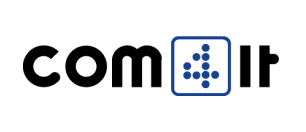How to? - Good scenario of product quality control.
Knowledge base
One of very important elements of the quality improvement process is quality control process. Quality control process itself consists of many elements, but its most important element is the scenario. How quality control scenario is prepared determines whether t entire control process will have a positive effect on the quality of the product or - on the contrary - will reduce it. So how do you prepare a good quality control scenario?
First step - what do we want to detect?
The key knowledge to build a good control scenario is awareness of the flaws that our product may have. The sources of knowledge about potential defects can be:
- customer service and complaints received from customers,
- product opinions issued by its users (consumers),
- storage and logistics department - returns, shipment damage reports,
- marketing and design department - marketing requirements and assumptions of product designers.
Obviously, building a list of potential defects depends on whether we are planning a quality control process for a completely new product being introduced to the market or introducing changes to the quality control of a product that already exists on the market. If we already build a catalog of our product defects, we proceed to their classification.
Second step - classification of product flaws.
The catalog of potential product defects must be divided into sections or groups. This division should result from the place where the flaws arise and how they are disclosed. It is also important that each flaw has a classification in terms of its validity, e.g.
- minor flaw,
- main flaw,
- critical flaw.
Let's divide each of the flaws into several groups that will correspond to their place of origin and method of disclosure. Such groups can be:
Packaging and labeling - here we collect flaws that affect the packed and labeled product and their disclosure will take place at the final stage of production control. This group includes damaged packaging at the production stage, errors in the appearance of the packaging, errors in the readability of the labeling of the packaging (label, its readability, durability, method of sticking - we invite you to learn about the effectiveness of labeling of goods).
Product visual inspection - a set of flaws revealed before the packaging stage and concerning the actual product and not the final product. This group may include flaws including visual deviations of the product from the pattern, visible damage, everything we can find by visual contact with the product.
Functional control - a set of flaws revealed during the functional tests of our product consisting in verifying whether our product works and behaves as expected. Examples of such flaws: the product does not turn on, the product tastes differently than it should, the product does not have all the required elements, etc.
Physical requirements - a set of laws covering the physical requirements of our product, i.e. weight, density, dimensions, etc. These may have different classification because e.g. some food products in accordance with the specification may have different weight and depending on how large we detect a deviation from the reference weight it will be slight or critical flaw.
Specialized tests - this is a group of flaws that is revealed during specialized functional tests of our product and an example here can be e.g. time of submitting a product based on the instructions provided with it, tool and parts. If we deliver furniture sets and the expectation is that the average time for furniture assembly is 15 minutes, then the elements affecting the time of assembly are: the way the product is packed, the arrangement of the parts in the packaging, assembly instructions, tools necessary for assembly (supplied and required), etc.
Barcode - this is practically the final control group for our goods, including flaws in the scope of legibility of the barcode on the goods, compliance of the substantive content of the code with the requirements, compliance of the data recorded in the code with the logistic and quantitative requirements, etc.
Packaging quality - a group of flaws revealed during packaging testing of goods resulting from flaws in the packaging itself (material, construction), model of product placement in the packaging (fillers).
Step three - checklist.
The final stage of building the quality control scenario is the checklist itself. Once we have a catalog of defects and their division into the method of disclosure and place of disclosure, we build a checklist. Our checklist should meet several requirements:
- questions should be divided into groups or sections corresponding to the place, stage and type of defect disclosure,
- questions should include a graphic presentation of the template, which allows an objective assessment to be made,
- answers to questions should give the opportunity to systematize the results.
All these requirements are met by checklists built with icmInspector system. If you want to see our checklists, please contact us using the contact form or chat.
Return












